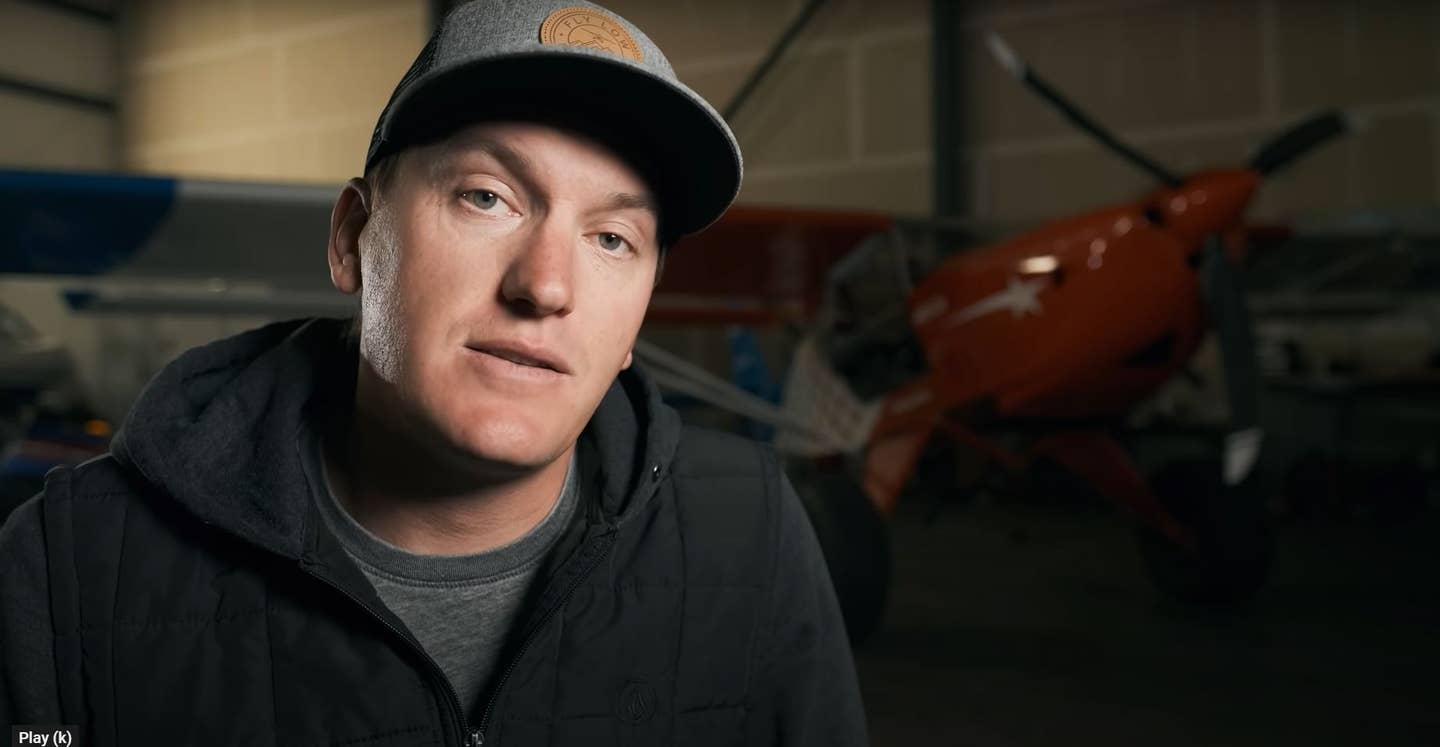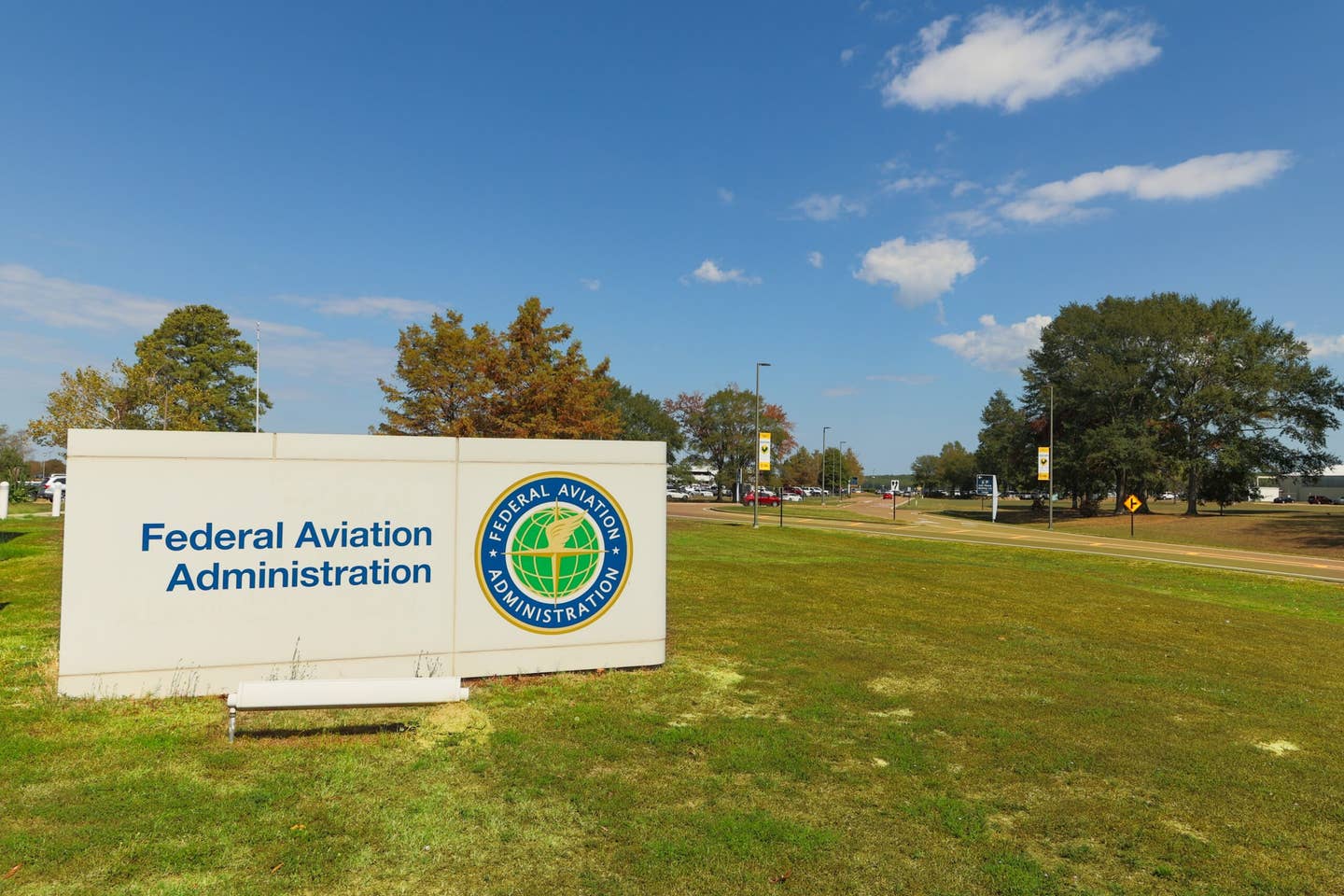Does Trent Palmer Deserve a Suspension?
FLYING has obtained video of the incident that got this social media star in trouble with the FAA. What does it really show?

Trent Palmer told his side of the story on his YouTube channel — and to FLYING. [YouTube Screengrab]
Video can be deceiving. Depending on the angle it is shot from, and the lens used to capture the images, it can be distorted. I say this as someone who spent 10 years in the television industry with much of that time spent as a photographer/producer.
Given this background, I became curious about the use of a video recorded off a television on to a cellphone that was used to justify the suspension of the private pilot certificate of YouTube pilot Trent Palmer. The pilot was accused of violating FARs 91.13 and 91.119—that is careless and reckless operation of an aircraft and flying too low—over two years ago.
FLYING obtained a copy of the video clip through a Freedom of Information Act (FOIA) request.
The original video was reportedly recorded by the security camera on a neighbor's house adjacent to a backyard airstrip.
The incident with Palmer occurred on November 24, 2019, in a sparsely populated part of Nevada. Palmer was attempting to land by invitation at a backyard airstrip owned by a friend. “The neighborhood is sparsely populated with a lot of room between properties. The strip is on a 10-acre parcel carved out in sage brush,” Palmer told FLYING.
Doorbell cameras are distorting—they tend to result in images that look like something from a carnival funhouse. Additionally, anytime you make a copy of a video by videotaping off another screen—in this case, the television playback to recording on a cellphone—there will be a loss of digital clarity.
The FAA contends that Palmer was flying at a hazardous altitude that endangered life or property and was less than 100 feet off the ground when he was within 50 feet of a stable, shed, and propane tank. He was also in close proximity to homes, as well as adults and children.
FLYING watched the 8-second video clip several times, clicking through it frame by frame looking for evidence of people or proximity to them and/or the structures mentioned. We did not see them.
However, in its response to FLYING's request for copies of the video the FAA noted, "We are withholding another video under Exemption 6 of the FOIA. Exemption 6 of the FOIA protects information that pertains to an individual “the disclosure of which would constitute a clearly unwarranted invasion of personal privacy,” (e.g., names, dates of birth, social security numbers, home addresses, and telephone numbers of parties mentioned). When applying Exemption 6, the FAA weighs the privacy interest of an individual against any public interest in the records. In this case, the identity of a woman and an infant."
Palmer maintains he did not see anyone during the flyover, and that he was following recommended procedures in the FAA’s publication Off Airport Ops. The publication advises pilots to make multiple inspection passes over unfamiliar unimproved runways to check for hazards, such as “cuts in gravel, rocks, dips, bumps, etc.” The ops manual goes on to state: “It is important to be at an angle to the runway, not above it. Certain light conditions can make a bad site seem good. Check and double check any area not used before.”
The manual continues: “Each pass should result in you becoming more comfortable with your chosen landing area. If you are becoming less comfortable, abandon the site and seek a more suitable landing area.”
After a few passes, Palmer decided to abort the landing. “Because of recent dirt work, I didn’t have a good visual of where I would touch down and decided not to land there,” he explained. FLYING pulled up a satellite image of the yard in question and there is evidence of what looks like a motocross or BMX track carved in the dirt.
Palmer forgot about the aborted landing until a few days later when he received a call from an aviation safety inspector from the Reno Flight Standards District Office (FSDO) requesting a meeting. Palmer was informed there was video of the low pass as captured by a security camera and the inspector told him he was going to recommend a temporary certificate suspension of 210 days.
In April 2020 the FAA notified Palmer through Notice of Proposed Certificate Action that the agency proposed suspending his private pilot certificate for 210 days because of the alleged violation of three FARs:
- FAR 91.119(a), which states: Except when necessary for takeoff or landing, no person may operate an aircraft below the following altitudes: Anywhere. An altitude allowing, if a power unit fails, an emergency landing without undue hazard to persons or property on the surface.
- FAR 91.119(c), which states: Except when necessary for takeoff or landing, no person may operate an aircraft below the following altitudes: Over other than congested areas. An altitude of 500 feet above the surface, except over open water or sparsely populated areas. In those cases, the aircraft may not be operated closer than 500 feet to any person, vessel, vehicle, or structure, and
- FAR 91.13(a), which states: No person may operate an aircraft in a careless or reckless manner so as to endanger the life or property of another.
Palmer obtained legal counsel and legal fists flew back and forth, resulting in a reduction of the suspension to 120 days. Then, in April 2022, the FAA reduced the suspension even further.
“A [National Transportation Safety Board] NTSB Administrative Law Judge affirmed the alleged violations but reduced the suspension to 60 days,” an FAA spokesperson told FLYING. “Both parties appealed that decision. The suspension is held in abeyance until the appeals process is complete.”
Palmer maintains that he did not violate FAR 91.119 since the low passes were made in preparation for landing. The judge argued that since there was no windsock or other runway marking identifying the area as a landing strip, the 60-day suspension would remain.
Careless and Reckless
As for the allegation that he operated his aircraft recklessly, Palmer replied, “FAR 91.13 careless and reckless is the FAA rubber rule, they throw that at anything.” Palmer said that had he landed, the 91.119 violation would not have applied, but the landing would have been risky for him, perhaps resulting in an incident or accident. He is worried that the judge’s ruling, if allowed to stand, will put external pressure on pilots to make potentially risky landings to avoid being cited for violating the regulation.
Flight instructors are supposed to educate their learners about “careless and reckless” operation of an aircraft. Some are no-brainers. Two low passes over an outdoor high school graduation in a Cessna 172, flying so low that the aircraft's registration number is easily identified by the numerous people and you can see the pilot is wearing Ray-Bans and a blue polo shirt—that’s careless and reckless.
However, most of the time “careless and reckless” is in the eye of the beholder—and very often the people reporting the behavior are “aviation challenged.” On two different occasions I have encountered people who were 1/4 of a mile from the extended centerline of the runway complaining about “being buzzed by low flying aircraft” and “fearing for their lives.” In the first instance, it was a woman in a shopping center parking lot who called 911. She did not realize there was an airport on the other side of the road behind the dirt berm—and the airplanes were on final approach to Runway 17 and at the appropriate altitude.
On the second instance, there were multiple people who ignored the “No Trespassing” signs placed in the grass field off the extended runway and used the field as a dog park and playground for their children, despite the fact the runway approach lights were mounted there. This got the attention of local pilots. Yes sir, there's nothing like breaking out of the clouds on the ILS 17 and seeing little Timmy flying a kite off the extended centerline. The airport manager fielded those calls—some came from people who felt endangered from the low-flying aircraft, and others from pilots who were concerned about encounters with hostile kite strings.
Ultimately the FAA paid for a fence to keep trespassers out.

Sign-up for newsletters & special offers!
Get the latest FLYING stories & special offers delivered directly to your inbox






